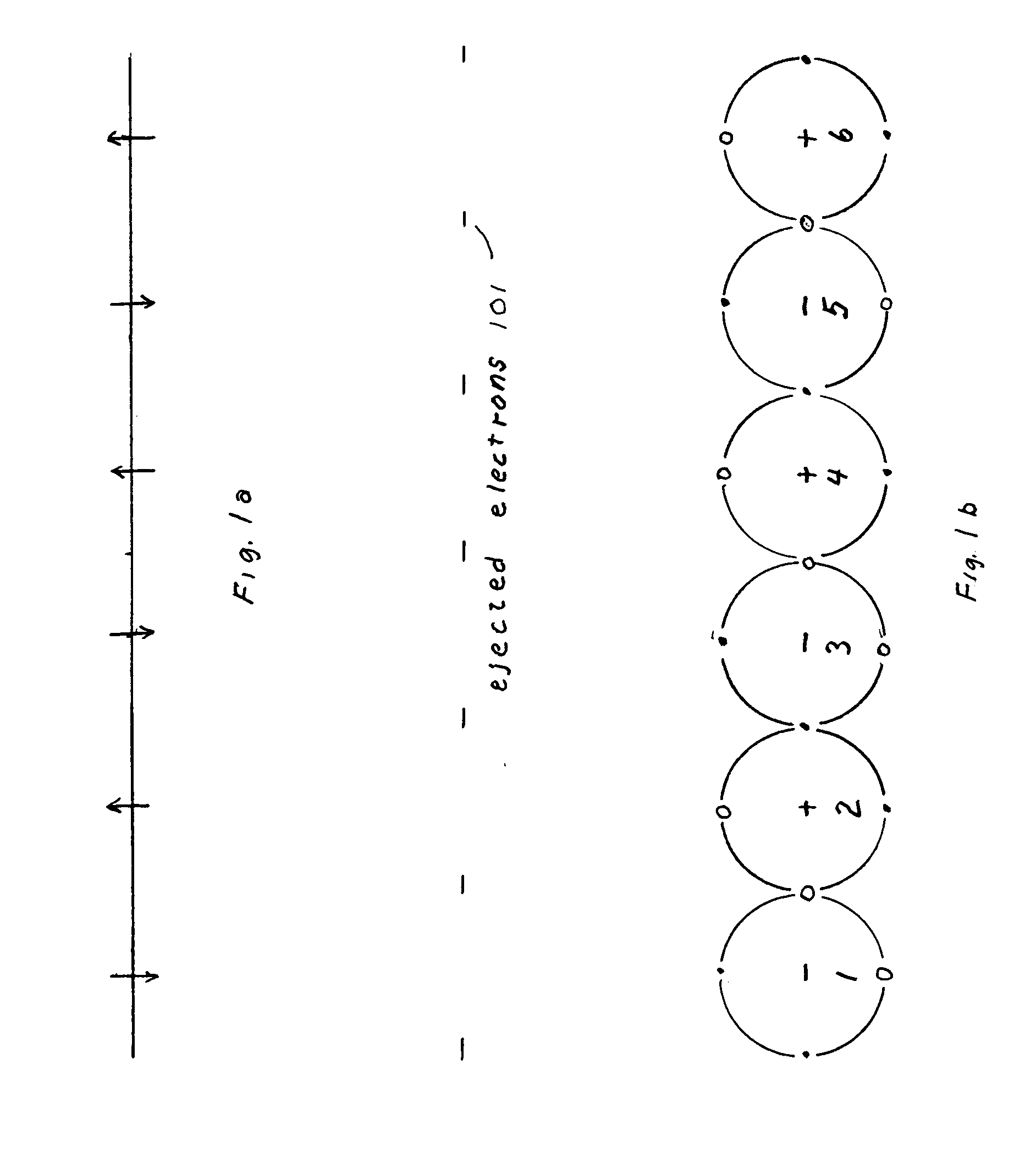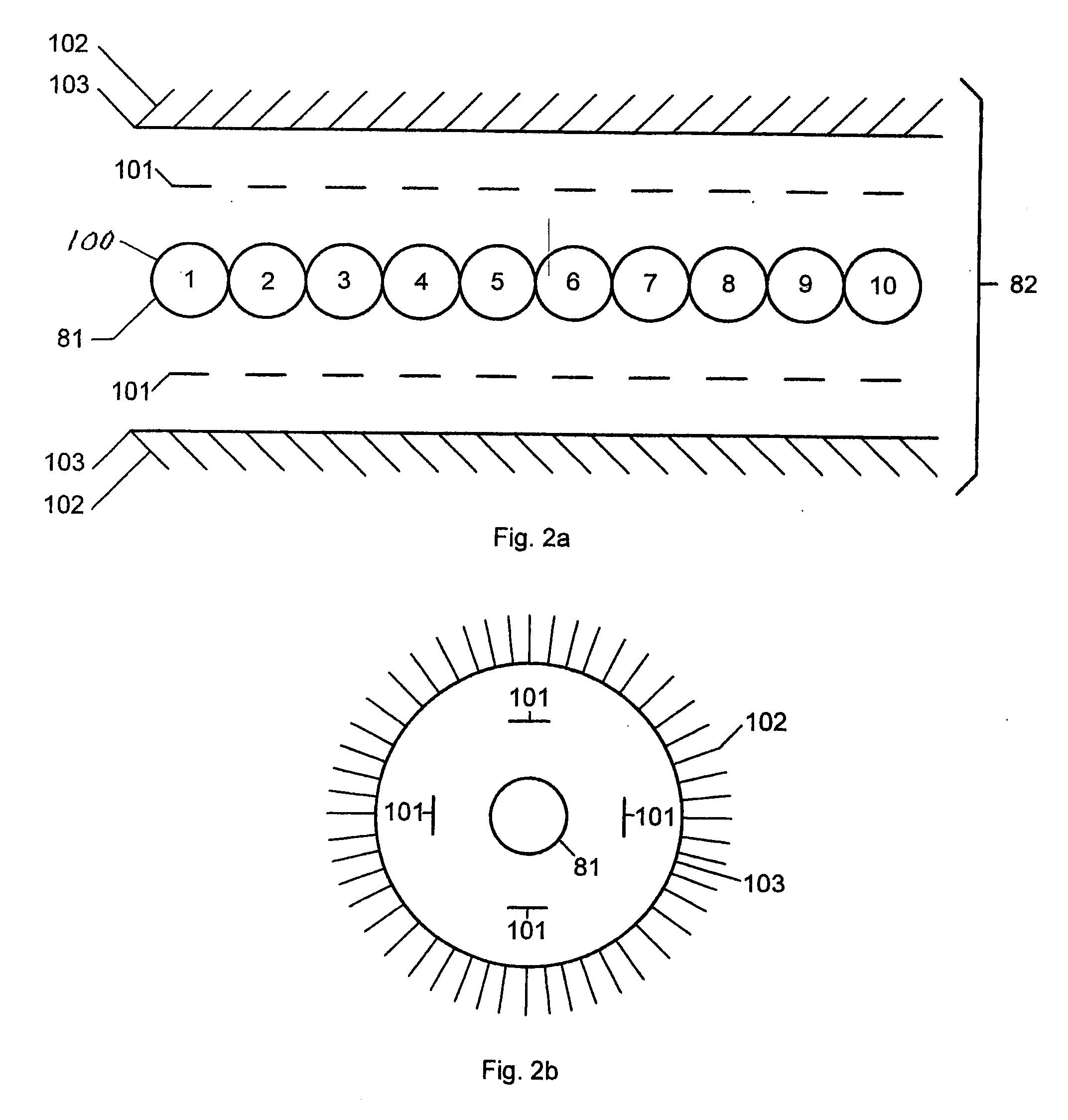Superconducting carbon 12 atomic strings and methods of manufacture of cables containing parallel strings
a technology of superconducting carbon and parallel strings, which is applied in the field of superconductors, can solve the problems of superconductors which require expensive cryogenic cooling
- Summary
- Abstract
- Description
- Claims
- Application Information
AI Technical Summary
Benefits of technology
Problems solved by technology
Method used
Image
Examples
Embodiment Construction
[0019]FIGS. 1a and 1b show six atoms, numbered 1 through 6, of a superconducting string of carbon atoms. The atoms have their magnetic direction alternating along the string. Moreover the atoms are in a super-dense relation with their outer four valence electrons touching each other at a midpoint between each pair of atoms along the string. Since two electrons cannot be at this midpoint at the same time, one electron per atom is ejected from the string and is useable for superconductivity.
[0020]FIG. 1a shows the carbon atoms in the plane of the valance electrons. Up and down arrows show the alternating magnetic direction of the atoms.
[0021]FIG. 1b shows the carbon atoms at right angles to the view of FIG. 1a. The four valence electrons of carbon no longer flow around individual atoms but rather flow in a forward FIG. 8 wave pattern from right to left and back as backward reversed wave pattern from left to right. The electron required at the midpoint is alternatively furnished by t...
PUM
 Login to View More
Login to View More Abstract
Description
Claims
Application Information
 Login to View More
Login to View More - R&D
- Intellectual Property
- Life Sciences
- Materials
- Tech Scout
- Unparalleled Data Quality
- Higher Quality Content
- 60% Fewer Hallucinations
Browse by: Latest US Patents, China's latest patents, Technical Efficacy Thesaurus, Application Domain, Technology Topic, Popular Technical Reports.
© 2025 PatSnap. All rights reserved.Legal|Privacy policy|Modern Slavery Act Transparency Statement|Sitemap|About US| Contact US: help@patsnap.com



